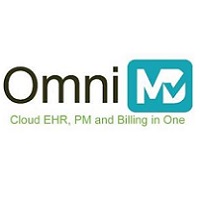 By OmniMD
By OmniMD
Twitter: @omnimd
Predictive analytics can be used effectively to evaluate massive data generated within the healthcare industry. Predictive analytics is a process that uses machine learning to analyze data and make predictions. By extracting useful information from established relationships among variables, predictive analytics withdraws this information from an existing data set and predicts outcomes and trends.
Being able to analyze current and historical data to understand problems, helps providers identify risks and opportunities that arise. However, adoption rates for predictive analytics have been low due to time constraints, performance difficulties and cost.
The use of analytics in healthcare is gaining momentum as the industry shifts to a value-based delivery model. Hospitals and clinics are searching for the ability to identify patient activity, reduce cost, and increase the level of engagement of both the physician and the patient.
Cost savings is important to most organizations. Predictive health analytics plays a vital part in reducing the cost of care. Organizations that combine financial data with patient analytics can pinpoint trends and spot patterns, helping to identify unnecessary transactions that do not compromise care.
How can predictive analytics improve healthcare outcomes and reduce transactions?
Enhance Patient Engagement
Proactive hospitals and outpatient clinics understand that patient-centered healhtcare requires building patient profiles that incorporate a holistic view of each. Predictive analytics will interpret, synthesize, and analyze holistic patient information, leading to actionable insights that help predict and manage patients’ needs.
As a result, healthcare organizations can connect and communicate with patients through the channels they most likely prefer, thus delivering healthcare experiences tailored to each individual’s expectations.
Improve Physician Performance
Encouraging patient engagement through predictive analytics provides physicians with the answers they are seeking for individual patients. In other words, analytics helps physicians determine the optimal treatment needed for each of their patients, leading to improved diagnoses, better outcomes and an effective use of each physician’s time.
Manage Risk Using Wearables
The advent of personal wearable devices, smartwatches and heart monitors that measure and transmit vital clinical data to care management systems enable care managers to monitor patients around the clock.
By analyzing the data collected and building predictive models, providers can identify patterns and trends for the purpose of predicting injury or exacerbation. Hindsight leads to foresight and early intervention can save lives, avoid complications, and prevent unplanned hospital admission.
For example, a nurse with access to a patient’s personalized care plans would continually monitor the patient’s health status for potentially serious trends. If a dangerous trend in the patient’s vitals is predicted, the nurse receives an alert and can promptly reach out to the patient, or authorized care givers, via phone call, video chat, or secure text. This allows for nurse/care-giver intervention before the patient even realizes there’s a problem.
Reduce Readmission Rates
Predictive analytics can reduce hospital readmission rates, by enhancing the care and attention a patient receives during their visit, through post-discharge and home transition.
Many studies have shown a direct correlation between patient outcomes and the length of stay in the hospital. The longer a patient is in the hospital, the more risk one has of infection, therefore its best to keep patients admitted only as long as necessary. Predictive analytics provides physicians with the data to redirect and enhance the stay of the patient in order to shorten their length of stay, if appropriate.
Simply put, by analyzing patient information predictive analytics allows physicians to not only identify the likelihood of a patient’s readmission, but develop outreach geared toward prevention. For example, if patients were hospitalized with heart failure, the hospital would personalize the post-discharge communication designed to educate them on appropriate diet, activity, warning signs, and the benefits of taking all their medications timely and accurately.
Reduce Triage Costs
In addition to preventing hospital readmissions, the use of predictive analytics reduces the cost of care, by enhancing the triage system. Hospitals have basic triage systems in place to assess the time and sequence on when patients are to be seen. By integrating predictive analytics into the mix, providers can manage staff and resources more effectively. A triage system that incorporates predictive analytics has the capability to anticipate complications in patient care, which can lead to better patient experiences.
The Role of Ambulatory EHR
As predictive analtyics gains momentum, ambulatory EHR systems can play a pivotal role. Ambulatory EHR systems with analytics and benchmarking capabilities can interoperate with wearables and third-party data ources to enhance the statistical reliability of predictive analytics. More data means greater reliability. Additionally, as value based healthcare models are adopted, physicians at clinics will increasingly rely on predictive analtyics for managing chronic care patients, identifying at risk patients and enhancing communications with all patients moving towards a healthcare system that both improves outcomes while reducing transactions.
This article was originally published on OmniMD and is republished here with permission.
